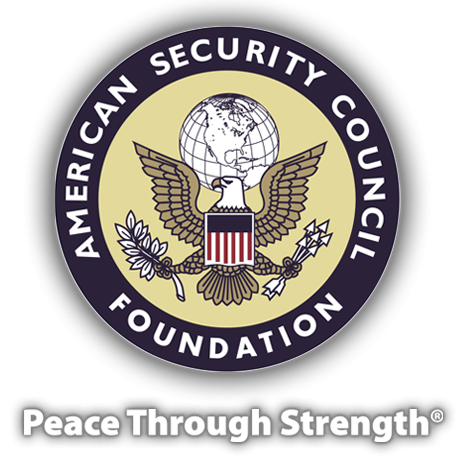Russian Warplanes in Libya Signal New Risky Phase of Conflict
Russia’s deployment of warplanes to Libya this month to support a militia leader’s assault on the U.N.-backed government in Tripoli raises Moscow’s involvement in the country’s civil war and threatens to escalate it.
Moscow’s intervention on behalf of military commander Khalifa Haftar, whose forces have been trying to capture the capital for more than a year, is driven by a desire to outflank its main regional rival, Turkey, according to analysts. Ankara has recently ramped up support for the Government of National Accord in Tripoli, helping it to roll back Mr. Haftar’s assault.
By sending direct military support to Mr. Haftar, Moscow expands its influence in the southern Mediterranean and adds fuel to a civil war that has displaced more than 200,000 people in the past year and a crisis that has created a pathway for migrants to reach Europe.
Russia’s Defense Ministry didn’t respond to questions for comment. But the arrival of Russian warplanes raises the risk of a significant escalation in the war in Libya, as Mr. Haftar’s forces recently threatened to launch a major bombing campaign after they were forced to retreat from areas around Tripoli.
However the Russian jets are used, their arrival in Libya further weakens the ability of Europe to impose a solution on the Libyan crisis by raising the possibility of a direct clash with Turkey and its allies who are now entrenched in western Libya, analysts say. Moscow’s move ushers in an era in which Turkey, Russia and other powers like the United Arab Emirates will have a greater role in determining the endgame.
“Russia wants to gain the upper hand in Libya and force the Turks to some agreement as the conflict will be of pressing concern for Europe,” said Maxim Suchkov, analyst at the Washington-based think tank, Middle East Institute. Russian President Vladimir Putin “wants to expand his agenda with the Europeans,” he said.
The deepening Turkish and Russian involvement in Libya marks a shift in the North African nation’s civil war. Outside powers have long backed opposing sides in the conflict that has left the country divided between rival governments since 2014. Aside from Turkey, the U.S. and most European countries recognize the Tripoli government, while Egypt and the United Arab Emirates back Mr. Haftar, who until now has received only covert backing from Russia, according to U.S. officials. Foreign intervention escalated when Mr. Haftar launched his assault on Tripoli in April 2019.
Since then, Turkish forces and Russian mercenaries have fought on opposing sides of the battle for Tripoli, which has ground on for more than a year. In recent weeks, Ankara’s support of the Government of National Accord has brought it new victories, forcing Mr. Haftar out of two Mediterranean towns and a strategic air base in Western Libya.
U.S. military officials confirmed the arrival of Russian MiG-29 jets at an air base controlled by Mr. Haftar earlier this week, releasing satellite photos. The United States Africa Command, which is responsible for Libya, also said the planes were flown to Libya via Syria by members of the Russian military.
Without directly addressing the deployment of the planes, Russia’s Foreign Ministry said Friday that Moscow wanted a diplomatic solution to the conflict and that the influx of foreign military aid had upended the balance of power on the ground.
A Turkish government spokesman didn’t immediately respond to a request for comment. Turkish leaders have said their role in the country is to support Libya’s legitimate government.
“The deployment of Russian jets is an act of desperation following a series of military defeats and the humiliating evacuation of Russian mercenaries from the Tripoli area,” said Mohammed Ali Abdallah, a senior advisor to the Government of National Accord.
In Washington, Brig. Gen. Gregory Hadfield, a senior intelligence official at the U.S. Africa Command, told reporters Friday that one of Russia’s motivations in deploying military aircraft to Libya was to establish a stronghold in a strategically important oil-rich area in North Africa.
He said that Russian surface-to-air-missiles also have been deployed at the Al Jufra airfield where the Russian MiG-29 and Su-24 planes are located, but noted those air defenses were not “state of the art.” Hangers are being constructed at the airfield and Russian cargo planes are flying equipment to the base on a regular basis.
The Russian fighter planes haven’t yet carried out combat missions since arriving in the Libya. Gen. Hadfield said that the Russian aircraft could carry air strikes on behalf of mercenaries, but are not likely to break the “stalemate” in the broader conflict.
“It really isn’t about winning the war,” he said. “It is about developing strongholds there” as well as continuing to provide support to Mr. Haftar and his forces.
If the planes are deployed in combat, they will almost certainly not be flown by Russian pilots, said a person close to the Russian Defense Ministry, otherwise Moscow risks upsetting any remaining ties it has with Fayez al-Serraj, prime minister of the government in Tripoli. Moscow, which has tried to maintain ties with both sides, hosted peace talks earlier this year with both Mr. Serraj and Mr. Haftar.
The Russian jet fighters alter the military balance of forces in Libya, where the air war has been dominated by Turkish drones backing the Tripoli government and Emirati drones supporting Mr. Haftar.
The Turkish aircraft have been critical to recent advances by the Tripoli government, providing air cover and targeted strikes against Mr. Haftar’s forces and his Russian-made air defense systems. But Moscow’s deployment of the warplanes will likely aim to change the balance of power in the skies.
One of the biggest questions is how far Russia is willing to go to use the 14 newly arrived MiG-29 fighters and Su-24 fighter-bombers in retaliation against the Turks and whether Ankara will, in turn, escalate further with more aircraft of its own.
“The MiG-29s can obviously shoot down the Turkish UAVs, and the Su-24 can be used to escalate to destroy Turkish UAV facilities on the ground,” said Rob Lee, a Russian defense expert at the Department of War Studies at King’s College London.
European powers have backed several failed attempts to broker a solution in Libya and to address specific aspects of the crisis, such as migration across the Mediterranean from Libya to Italy or the inflow of weapons to the country. At a conference in Berlin in January, world powers agreed to uphold an international arms embargo on Libya. The summit was followed by a surge in weapons transfers and a resumption in fighting.
European countries have been riven by divisions in their approach to the Libyan conflict. France has sent troops to fight alongside Mr. Haftar’s men, while many other European states lean toward the Tripoli government, which is Europe’s partner in counter-migration efforts.
The rise in Turkish and Russian involvement, and the continued role of the Emirates, who have long been Mr. Haftar’s strongest backers, further ossifies Europe’s role in the crisis.
“Turkey is a very useful cynical partner for Russia to keep in the long run. It’s a good way to instill disharmony within NATO. It’s a good way to bother the EU from a migration perspective,” said Jalel Harchaoui, a Libya expert at the Clingendael Institute, a think tank in The Hague.
Photo: This image shows a Russian jet fighter flying over Libya, according to United States Africa Command, which released the photo on May 26. - AGENCE FRANCE-PRESSE/GETTY IMAGES
Link: https://www.wsj.com/articles/russian-jet-fighters-in-libya-signal-new-risky-phase-of-war-11590776569











